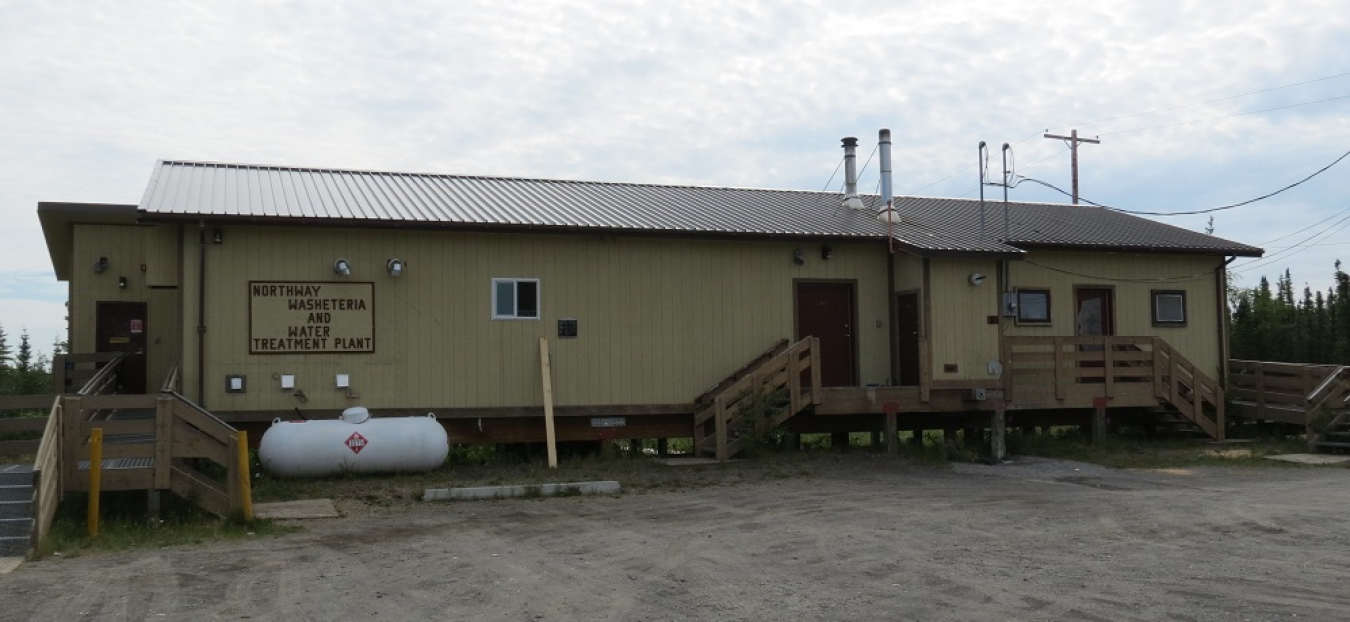In response to a technical assistance request from the Northway Village Council, the U.S. Department of Energy (DOE) Office of Indian Energy recently engaged experts from DOE’s National Renewable Energy Laboratory (NREL) to complete energy efficiency...
Office of Indian Energy Policy and Programs
April 13, 2017
The Northway Washeteria and Water Treatment Plant is one of four community buildings that underwent energy assessments to identify potential energy- and cost-saving opportunities. Photo from Northway Village Council.
In response to a technical assistance request from the Northway Village Council, the U.S. Department of Energy (DOE) Office of Indian Energy recently engaged experts from DOE’s National Renewable Energy Laboratory (NREL) to complete energy efficiency and renewable energy assessments on four community buildings for the Village of Northway, Alaska:
- Northway Community Hall
- New community kitchen and office
- Washeteria and water treatment plant
- Water and sewer haul building.
On August 31, 2016, the NREL technical assistance team performed a site assessment in Northway to collect data, discuss the challenges and goals of the Council, and identify potential opportunities—using best practices for arctic environments.
“I was shocked how quickly NREL came to our Village after we submitted the technical assistance request,” said Nichol Rallo, Bookkeeper and former Tribal Administrator for the Northway Village Council. “Especially because we understand what it takes to get here from Colorado.”
Following the visit, the technical assistance team conducted building energy simulation modeling and analyses to quantify potential energy savings. Their work helped inform the Village of the opportunities for improving the energy performance of the four community buildings. Potential energy efficiency measures assessed through this technical assistance included:
- Programmable thermostats
- Lighting occupancy sensors
- High-efficiency pumps
- Vending machine misers
- Alternatives to heat loops to prevent pipe freeze on water lines
- Solar photovoltaics (PV).
All the measures analyzed had reasonable payback periods given the community’s relatively high utility costs (i.e., $0.62/kilowatt-hour for electricity and $3.76/gallon for fuel oil, compared to the average electricity price of $0.12/kilowatt-hour in the contiguous United States).
NREL’s analysis also found that most of the buildings could achieve net-zero electricity annually by installing the maximum amount of rooftop and/or ground-mounted PV. This echoes last year’s Office of Indian Energy report “Solar Energy Prospecting in Remote Alaska,” which found solar could be an affordable option to reduce diesel fuel usage in certain locations throughout Alaska.
“As a result of this support and as a means of moving this forward, we’re in the process of applying for a grant to install solar panels on the roofs of these buildings,” Rallo said. “If we get that grant, we could potentially cut our electric bill in half for at least six months of the year. If we can reduce those expenses, we have more dollars for doing other things we need to be doing in the community.”
Since receiving this assistance, the Village of Northway has been proactive about implementing energy and water efficiency measures to reduce costs, including LED lighting retrofits, high-efficiency boilers, high-efficiency motors with built-in variable-speed drives, heat recovery for ventilation air, high insulation levels, and manual temperature setbacks.
Learn more about how to request technical assistance from the Office of Indian Energy.

